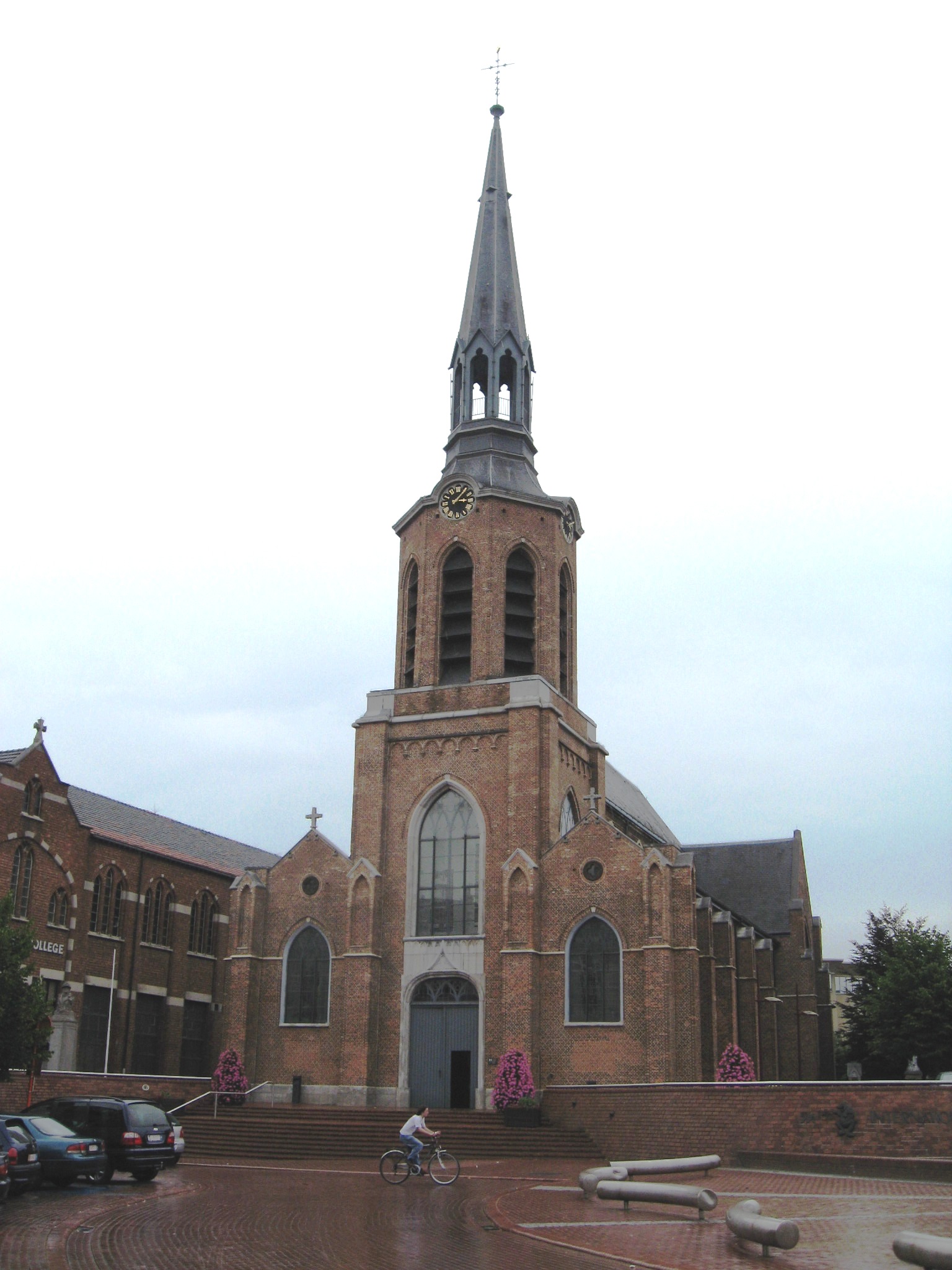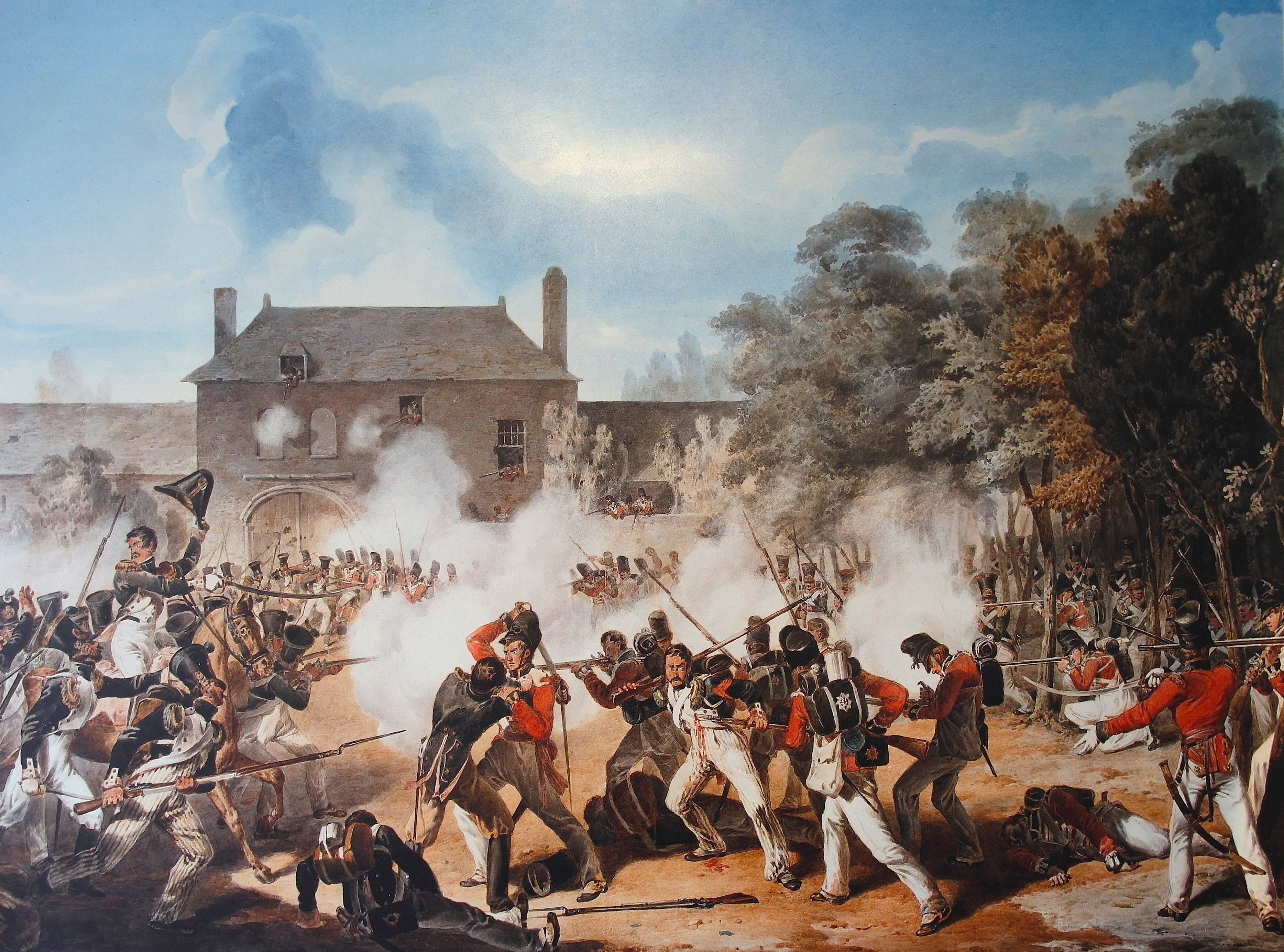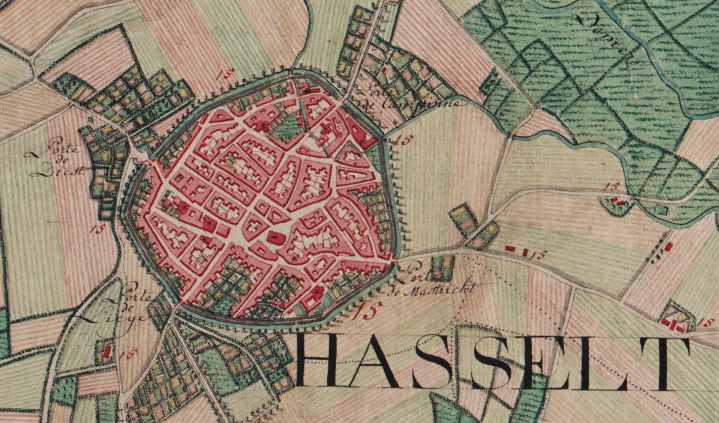|
Lummen
Lummen (; li, Leume or ''Lumme'' ) is a municipality located in the Belgian province of Limburg near Hasselt. On January 1, 2006, Lummen had a total population of 13,691. The total area is 53.38 km² which gives a population density of 256 inhabitants per km². The municipality consists of the following sub-municipalities: Lummen proper, Meldert en Linkhout. In addition, it includes the following hamlets: Geneiken, Genenbos, Gestel, Goeslaar, Groenlaren, Laren, Mellaer, Molem, Oostereinde, Rekhoven, Schalbroek, and Thiewinkel. Kasteel Lagendal is situated in this municipality. The historic coat of arms features the crests of the Houses of Arenberg, La Marck and Arrazola de Oñate. In 2008 however, the municipality chose to use a new logo on its official documents instead. Originally this was an estate ("villa") of the Prince Bishop of Liège. The core of this (Lummen-Koersel) was one parish until 1180. From the 10th to the 12th centuries, the County of Loon expanded in ... [...More Info...] [...Related Items...] OR: [Wikipedia] [Google] [Baidu] |
Lummen
Lummen (; li, Leume or ''Lumme'' ) is a municipality located in the Belgian province of Limburg near Hasselt. On January 1, 2006, Lummen had a total population of 13,691. The total area is 53.38 km² which gives a population density of 256 inhabitants per km². The municipality consists of the following sub-municipalities: Lummen proper, Meldert en Linkhout. In addition, it includes the following hamlets: Geneiken, Genenbos, Gestel, Goeslaar, Groenlaren, Laren, Mellaer, Molem, Oostereinde, Rekhoven, Schalbroek, and Thiewinkel. Kasteel Lagendal is situated in this municipality. The historic coat of arms features the crests of the Houses of Arenberg, La Marck and Arrazola de Oñate. In 2008 however, the municipality chose to use a new logo on its official documents instead. Originally this was an estate ("villa") of the Prince Bishop of Liège. The core of this (Lummen-Koersel) was one parish until 1180. From the 10th to the 12th centuries, the County of Loon expanded in ... [...More Info...] [...Related Items...] OR: [Wikipedia] [Google] [Baidu] |
Kasteel Lagendal
Kasteel Lagendal is a country house in Lummen, in the Limburg (Belgium), province of Limburg, Belgium. It was built in 1850 in a vernacular late classical style as a shooting box commissioned by Paul Jacobs-Stellingwerff of Hasselt. Its name comes from its site on the longest point of the Lummen. Until 2005, renamed Kasteel Saint-Paul, it housed an up-market French restaurant. See also *List of castles in Belgium External linksKastelenroute a bicycle tour of country houses (''kastellen'') in Heusden, Zolder and Lummen. Castles in Belgium Castles in Limburg (Belgium) Hunting lodges in Belgium {{Belgium-struct-stub ... [...More Info...] [...Related Items...] OR: [Wikipedia] [Google] [Baidu] |
House Of La Marck
The House of La Marck (german: von der Mar(c)k) was a noble family, which from about 1200 appeared as the counts of Mark. History The family history started with Count Adolf I, scion of a cadet branch of the Rhenish Berg dynasty residing at Altena Castle in Westphalia. In the early 13th century Adolf took his residence at his family's estates around Mark, a settlement in present-day Hamm-Uentrop. Adolf had inherited the Mark fortress from his father Count Frederick I of Berg-Altena (d. 1198) together with the older county around Altena and began to call himself count de La Mark. Originally liensmen of the archbishops of Cologne in the Duchy of Westphalia, the family ruled the County of Mark, an immediate state of the Holy Roman Empire, and, at the height of their powers, the four duchies of Julich, Cleves, Berg and Guelders as well as the County of Ravensberg. Members of the family became bishops in the Prince-Bishoprics of Liège, Münster and Osnabrück, and Archbi ... [...More Info...] [...Related Items...] OR: [Wikipedia] [Google] [Baidu] |
Heusden-Zolder
Heusden-Zolder (; li, Heuze-Zolder ) is a Municipalities of Belgium, municipality located in the Belgium, Belgian Limburg (Belgium), province of Limburg near Hasselt. On 1 January 2006 Heusden-Zolder had a total population of 30,769. The total area is 53.23 km² which gives a population density of 578 inhabitants per km². Heusden-Zolder was the result of the merger on 1 January 1977 of the two former municipalities of Heusden and Zolder, and currently consists of the former Heusden parishes of Heusden centre, Berkenbos and Eversel, and the former Zolder parishes of Zolder centre, Boekt, Viversel, Bolderberg and Lindeman. Heusden-Zolder is home to almost 2,000 Immigration, immigrants from all over the world. This is due to the (now closed) coal mine of Zolder. During the 1960s Belgian coal mines faced an enormous shortage of employees. To address this problem, foreigner labourers were encouraged to immigrate and work near the mines. After their closure (the mine in Zolder wa ... [...More Info...] [...Related Items...] OR: [Wikipedia] [Google] [Baidu] |
Arrondissement Of Hasselt
The Arrondissement of Hasselt ( nl, Arrondissement Hasselt; french: Arrondissement de Hasselt) is one of the three administrative arrondissements in the Province of Limburg, Belgium. It is both an administrative and a judicial arrondissement. However, the Judicial Arrondissement of Hasselt also comprises the municipalities of Lommel, Hamont-Achel, Neerpelt, Overpelt, Hechtel-Eksel, Peer and Houthalen-Helchteren in the Arrondissement of Maaseik. Municipalities The Administrative Arrondissement of Hasselt consists of the following municipalities: * As * Beringen * Diepenbeek * Genk * Gingelom * Halen * Ham * Hasselt * Herk-de-Stad * Heusden-Zolder * Leopoldsburg * Lummen * Nieuwerkerken * Sint-Truiden * Tessenderlo * Zonhoven * Zutendaal Per 1 January 2019, the municipality of Opglabbeek was removed from this arrondissement, as it was merged with Meeuwen-Gruitrode into the new municipality of Oudsbergen in the arrondissement of Maaseik. Hasselt Hasselt (, , ; la ... [...More Info...] [...Related Items...] OR: [Wikipedia] [Google] [Baidu] |
Beringen, Belgium
Beringen (; french: Béringue, ; li, Berringe) is a city and municipality located in the Belgian province of Limburg. The Beringen municipality includes the town of Beringen proper and the old communes of Beverlo, Koersel, and Paal. History Origins Beringen was already inhabited in Celtic times, as proven by the 1995 archeological finds of gold coins and artifacts on its territory. These date from around 90 BC and are the most northerly late-Iron-Age gold objects found in Europe. Other finds, including of Roman coins, indicate a very early establishment.Beringen historisch The first mention of Beringen dates to 1120 when it was known as 'Beringe', a word derived from the Germanic Beringum, which meant 'with the ... [...More Info...] [...Related Items...] OR: [Wikipedia] [Google] [Baidu] |
Diest
Diest () is a city and municipality located in the Belgian province of Flemish Brabant. Situated in the northeast of the Hageland region, Diest neighbours the provinces of Antwerp to its North, and Limburg to the East and is situated around 60 km from Brussels. The municipality comprises the city of Diest proper and the towns of Deurne, Kaggevinne, Molenstede, Schaffen and Webbekom. As of January 1, 2006, Diest had a total population of 22,845. The total area is 58.20 km² which gives a population density of 393 inhabitants per km². History Between 1499 and 1795 the town was controlled by the House of Nassau (as were Breda in the Netherlands, Dillenburg in Germany and Orange in France) which was also the family of the Princes of Orange who at the end of the Napoleonic Wars became in 1815 the kings and queens of the Netherlands after the termination of the Dutch republic at the hands of revolutionary forces in 1795. The most famous representative of the House of ... [...More Info...] [...Related Items...] OR: [Wikipedia] [Google] [Baidu] |
Halen
Halen (), formerly Haelen ( li, Hôle), is a City status in Belgium, city and Municipalities of Belgium, municipality located in the Belgium, Belgian province of Limburg (Belgium), Limburg, to the west of Hasselt. On January 1, 2018, Halen had a total population of 9,461. The total area is 36.29 km² which gives a population density of 261 inhabitants per km². The municipality consists of the following deelgemeente, sub-municipalities: Halen proper, Loksbergen, and Zelem. During the First World War, on August 12, 1914, the Battle of Halen took place here near the river crossing of the Gete. References External links * * *Official website Municipalities of Limburg (Belgium) {{LimburgBE-geo-stub ... [...More Info...] [...Related Items...] OR: [Wikipedia] [Google] [Baidu] |
Herk-de-Stad
Herk-de-Stad (; french: Herck-la-Ville, ) is a city and municipality located in the Belgian province of Limburg. On 1 January 2018, Herk-de-Stad had a total population of 12,661. The total area is 42.83 km² which gives a population density of 296 inhabitants per km². Besides the village of Herk-de-Stad itself, the municipality contains the communities of Berbroek, Schulen and Donk. Donk contains two country houses, both of the eighteenth-century, Kasteel Hamont and Kasteel Landwijk, which stands on the site of a castle established in the 12th century. Rock Herk There is an annual rock festival in the village, Rock Herk. There is a balanced mix of techno, drum 'n bass, electronica, alternative rock, post-rock, punk-rock, hardcore punk, metal, stoner, rock 'n roll, and related genres. Bands that played in the past include Stretch Arm Strong, Isis, Explosions in the Sky, New Wet Kojak, Karate, Add N to (X), Thin White Rope, Swervedriver, Spiritualized, Cosmic Psychos, Slapsho ... [...More Info...] [...Related Items...] OR: [Wikipedia] [Google] [Baidu] |
Arrazola De Oñate
Arrazola de Oñate (also written as ''de Arrazola Oñate'') is a Belgian noble family, stemming from the Arrazola family in the city of Oñate in the Basque Country. Since the 16th century a branch has been living in the Southern Netherlands, later to become the United Kingdom of the Netherlands and Belgium. The Current Head is the Duchess Nathalie Chandler Arrazola de Oñate d’Arenberg. The next in line is Prince , Viktor Sacha Arrazola de Oñate d’Arenberg. Origin Juan Alexandro Arrazola de Oñate was born around 1580 in the Spanish de Arrazola family and travelled with Isabella and Archduke Albert VII to the Southern Netherlands in order to become their chamberlain. In 1611 he married Beatrice Heath, the daughter of English nobleman Jerome Heath. His Spanish nobility was officially recognised in Flanders and Brabant in 1649. On 7 August 1647, King Philip IV of Spain made Juan's son, Marc Albert , a Duke. Marc was Lieutenant general of the Falconers of Flanders and ma ... [...More Info...] [...Related Items...] OR: [Wikipedia] [Google] [Baidu] |
Hasselt
Hasselt (, , ; la, Hasseletum, Hasselatum) is a Belgian city and municipality, and capital and largest city of the province of Limburg in the Flemish Region of Belgium. It is known for its former branding as "the city of taste", as well as its local distelleries of Hasselt jenever (gin), the Hasselt Jenever Festivities, Limburgish pie and the Hasselt speculaas. The municipality includes the original city of Hasselt, plus the boroughs of Sint-Lambrechts-Herk, Wimmertingen, Kermt, Spalbeek, Kuringen, Stokrooie, Stevoort and Runkst, as well as the hamlets and parishes of Kiewit, Godsheide and Rapertingen. On 01 July 2022 Hasselt had a total population of 80,260 (39,288 men and 40,972 women). Both the Demer river and the Albert Canal run through the municipality. Hasselt is located in between the Campine region, north of the Demer river, and the Hesbaye region, to the south. On a larger scale, it is also situated in the Meuse-Rhine Euroregion. History Hasselt was founded in a ... [...More Info...] [...Related Items...] OR: [Wikipedia] [Google] [Baidu] |
Limburg (Belgium)
Limburg ( nl, Limburg, ; li, Limburg or ''Wes-Limburg'' ; french: Limbourg, ) is a province in Belgium. It is the easternmost of the five Dutch-speaking provinces that together form the Region of Flanders, one of the three main political and cultural sub-divisions of modern-day Belgium. Limburg is located west of the Meuse ( nl, Maas), which separates it from the similarly-named Dutch province of Limburg. To the south it shares a border with the French-speaking province of Liège, with which it also has historical ties. To the north and west are the old territories of the Duchy of Brabant. Today these are the Flemish provinces of Flemish Brabant and Antwerp to the west, and the Dutch province of North Brabant to the north. The province of Limburg has an area of which comprises three arrondissements (''arrondissementen'' in Dutch) containing 44 municipalities. Among these municipalities are the current capital Hasselt, Sint-Truiden, Genk, and Tongeren, the only Roman city in ... [...More Info...] [...Related Items...] OR: [Wikipedia] [Google] [Baidu] |





